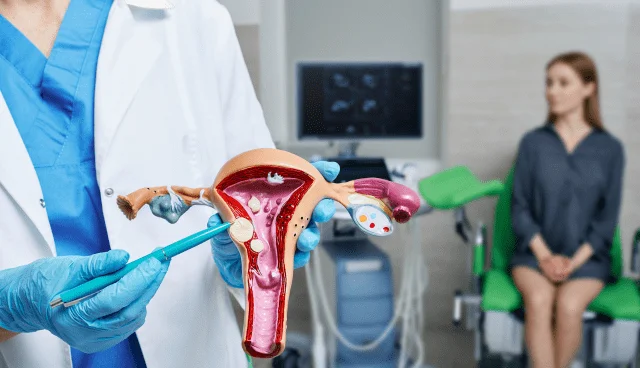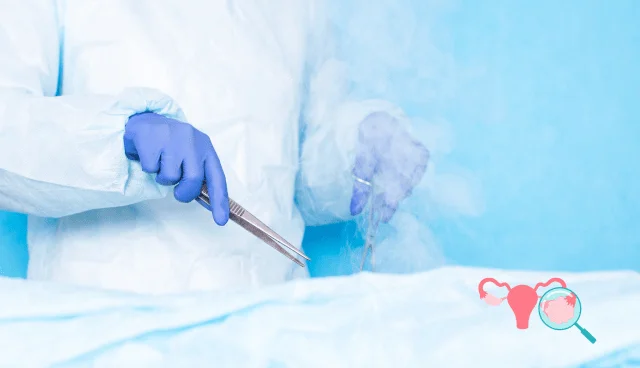
What is Fibroid - Symptoms, and Treatment
Fibroids, medically known as uterine fibroids or fibroid myomas, are a common health issue among women. These noncancerous growths in the uterus can cause a range of symptoms and complications. In this comprehensive guide, we will delve into the world of fibroids, exploring what they are, their symptoms, types, and the best treatments available, including fibroid removal surgery.
What is Fibroid?
Fibroids, or uterine fibroids, are benign tumors that develop within the walls of the uterus. They are made up of smooth muscle cells and fibrous connective tissue and can vary in size from small, seed-like growths to large, grapefruit-sized masses. Fibroids are quite common, and research suggests that up to 70% of women may develop fibroids at some point in their lives, with a higher prevalence among African American women.
Types of Fibroids
Fibroids come in various types, classified based on their location within the uterus:
- Intramural fibroids: They grow within the uterine muscle wall and are the most common variety. They can cause the uterus to appear enlarged and can lead to symptoms like heavy menstrual bleeding and pelvic pain.
- Submucosal Fibroids: These grow just beneath the inner lining of the uterine cavity and can cause heavy menstrual bleeding, frequent urination, and even difficulty conceiving.
- Subserosal Fibroids: These develop on the outer wall of the uterus and can press against surrounding organs, leading to back pain and pelvic pressure.
- Pedunculated Fibroids: These fibroids have a stalk-like structure which links them to the uterus. Depending on where they are, they might produce different symptoms.
Understanding the different types of fibroids is crucial for diagnosing and determining the most appropriate treatment.
Fibroid Symptoms
The symptoms of fibroids can vary greatly, and some women may experience no symptoms at all. Common fibroid symptoms include:
- Heavy Menstrual Bleeding: Excessive menstrual bleeding, often accompanied by longer periods and the need to change sanitary products frequently.
- Pelvic Pain and Pressure: Women with fibroids may experience discomfort or pain in the pelvic region. Larger fibroids can cause a feeling of fullness or pressure in the lower abdomen.
- Frequent Urination: Submucosal fibroids can press against the bladder, leading to increased urinary frequency and urgency.
- Constipation or Difficulty with Bowel Movements: In some cases, fibroids can put pressure on the rectum, causing constipation or pain during bowel movements.
- Backache or Leg Pains: Large fibroids can press on nerves in the back and cause back pain or leg pains.
- Painful Intercourse: Fibroids can sometimes make sexual intercourse painful or uncomfortable.
- Enlarged Abdomen: In cases of large fibroids or multiple fibroids, the uterus can become significantly enlarged, causing the abdomen to protrude.
It’s important to note that the severity and combination of symptoms can vary widely among individuals, and not all women with fibroids will experience every symptom.
Diagnosis
If you suspect you have fibroids or are experiencing symptoms, it’s crucial to seek medical evaluation. Diagnosis typically involves a combination of:
- Medical History: Your healthcare provider will ask about your symptoms and medical history.
- Pelvic Exam: A pelvic exam allows the healthcare provider to feel for any abnormalities in the uterus.
- Imaging Tests: To confirm the presence and location of fibroids, imaging tests like ultrasound, MRI, or a CT scan may be recommended.
- Hysteroscopy: In some cases, a hysteroscope, a thin, lighted tube, may be used to examine the inside of the uterus.

Best Treatment for Fibroids
The choice of treatment for fibroids depends on various factors, including the size and location of the fibroids, the severity of symptoms, a woman’s age, and her desire for future pregnancies. Here are some of the best treatment options for fibroids:
- Watchful Waiting: In cases where fibroids are small, asymptomatic, or not causing significant issues, healthcare providers may recommend monitoring the condition without immediate intervention.
- Medications: Some medications, such as hormonal birth control, can help manage symptoms like heavy bleeding and pain. Gonadotropin-releasing hormone (GnRH) agonists may also be prescribed to temporarily shrink fibroids.
- Minimally Invasive Procedures: Several minimally invasive procedures can be used to treat fibroids, including:
- Uterine Artery Embolization (UAE): This procedure blocks the blood vessels that supply fibroids, causing them to shrink.
- Myomectomy: Myomectomy is the surgical removal of fibroids while preserving the uterus. It is often recommended for women who want to maintain their fertility.
- Laparoscopic or Robotic-Assisted Myomectomy: These minimally invasive surgical procedures remove fibroids through small incisions, reducing recovery time.
- Fibroid Removal Surgery (Hysterectomy): In cases where fibroids are large, causing severe symptoms, or when fertility is not a concern, a hysterectomy may be recommended. This procedure removes the uterus and effectively eliminates the possibility of fibroid recurrence.
- MRI-Guided Focused Ultrasound Surgery (MRgFUS): This non-invasive procedure uses high-intensity ultrasound waves to heat and destroy fibroids.
- Endometrial Ablation: This procedure destroys the uterine lining and can help manage heavy menstrual bleeding associated with fibroids.
The choice of treatment should be made in consultation with a healthcare provider and tailored to the individual’s specific circumstances and preferences.
Conclusion
In conclusion, understanding what fibroids are and their associated symptoms is crucial for women’s health. While fibroids are a common condition, they can cause a range of discomfort and complications. If you suspect you have fibroids or are experiencing related symptoms, it’s important to seek medical evaluation and discuss treatment options with your healthcare provider.
Remember that there is no one-size-fits-all approach to fibroid treatment, and the best course of action will depend on factors such as the size and location of the fibroids, the severity of symptoms, and your personal preferences. Whether you opt for minimally invasive procedures, medications, or surgery, the goal is to alleviate symptoms and improve your quality of life.
Fibroids may be a common health issue, but with the right diagnosis and treatment plan, women can effectively manage and overcome this condition, restoring their well-being and peace of mind.
